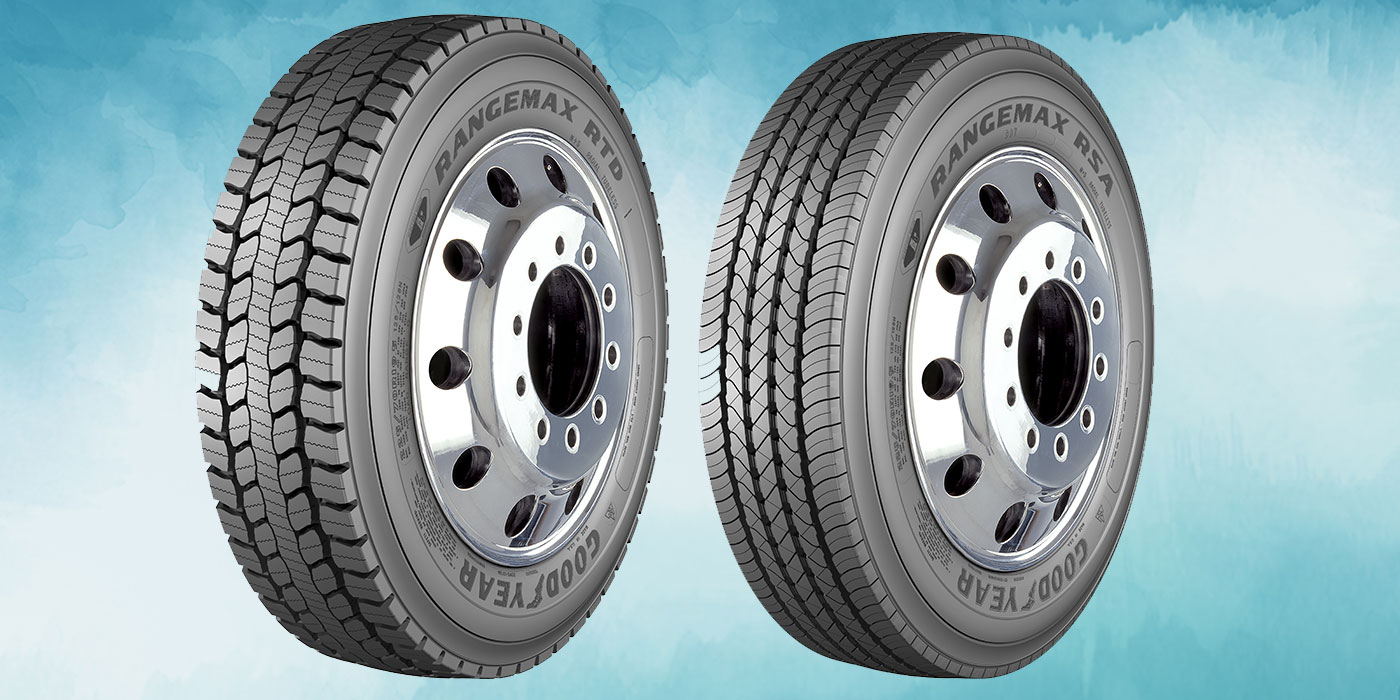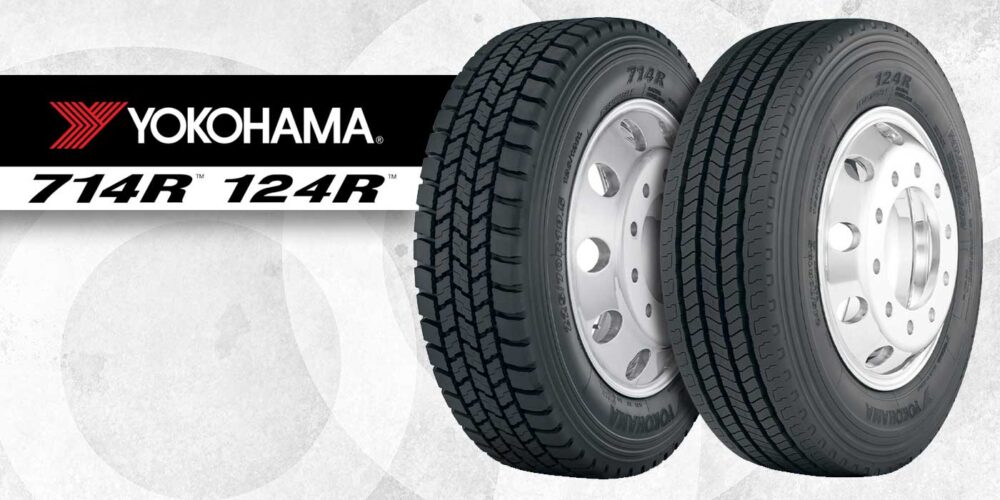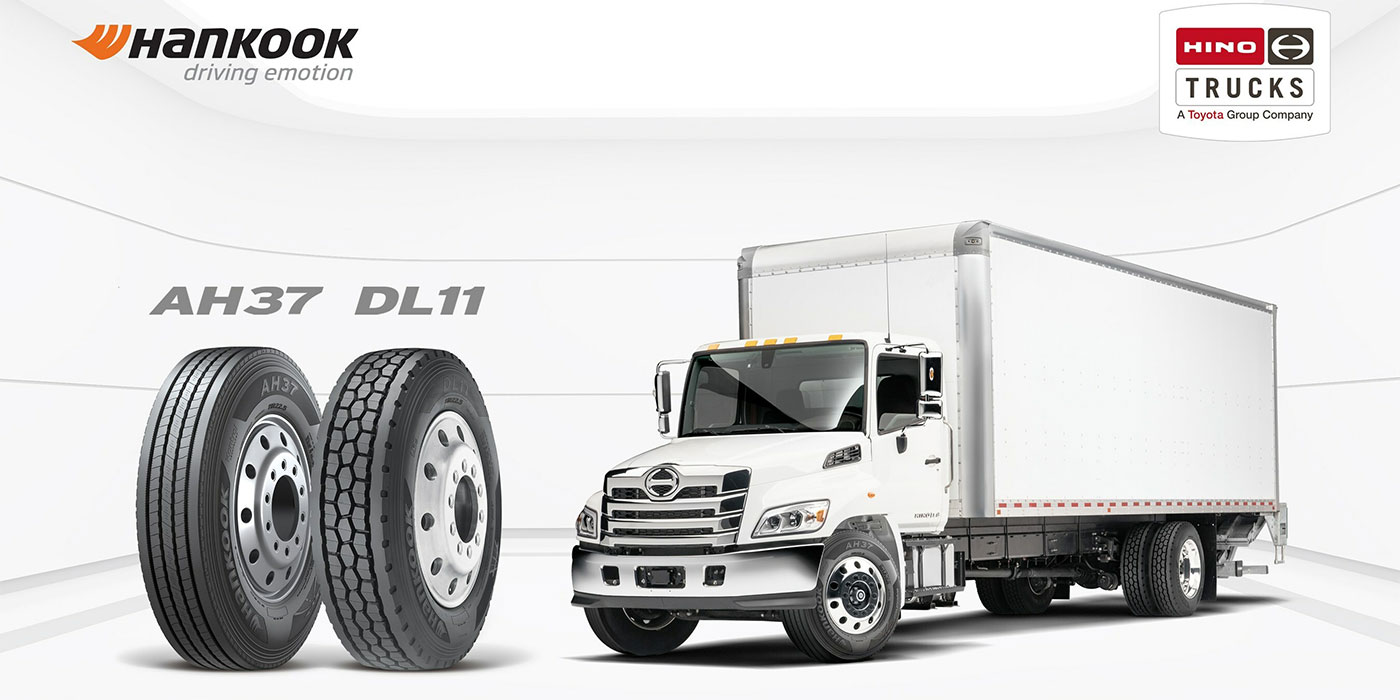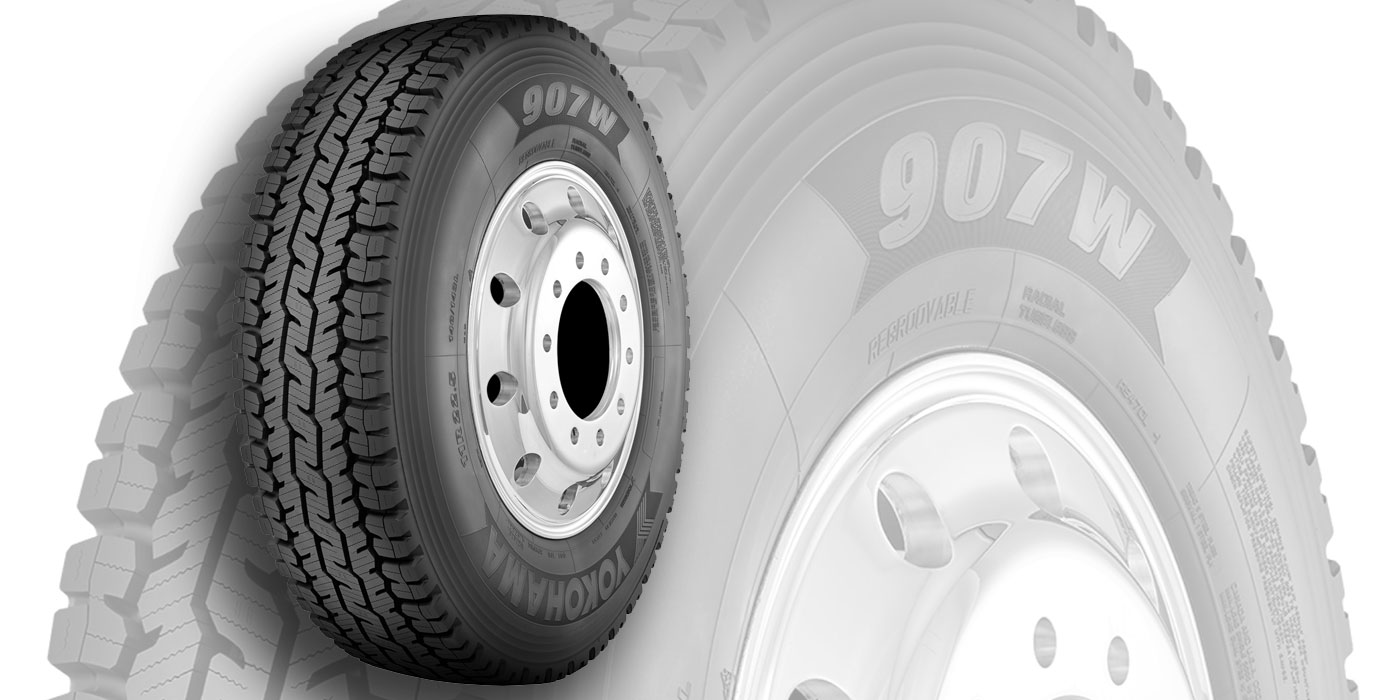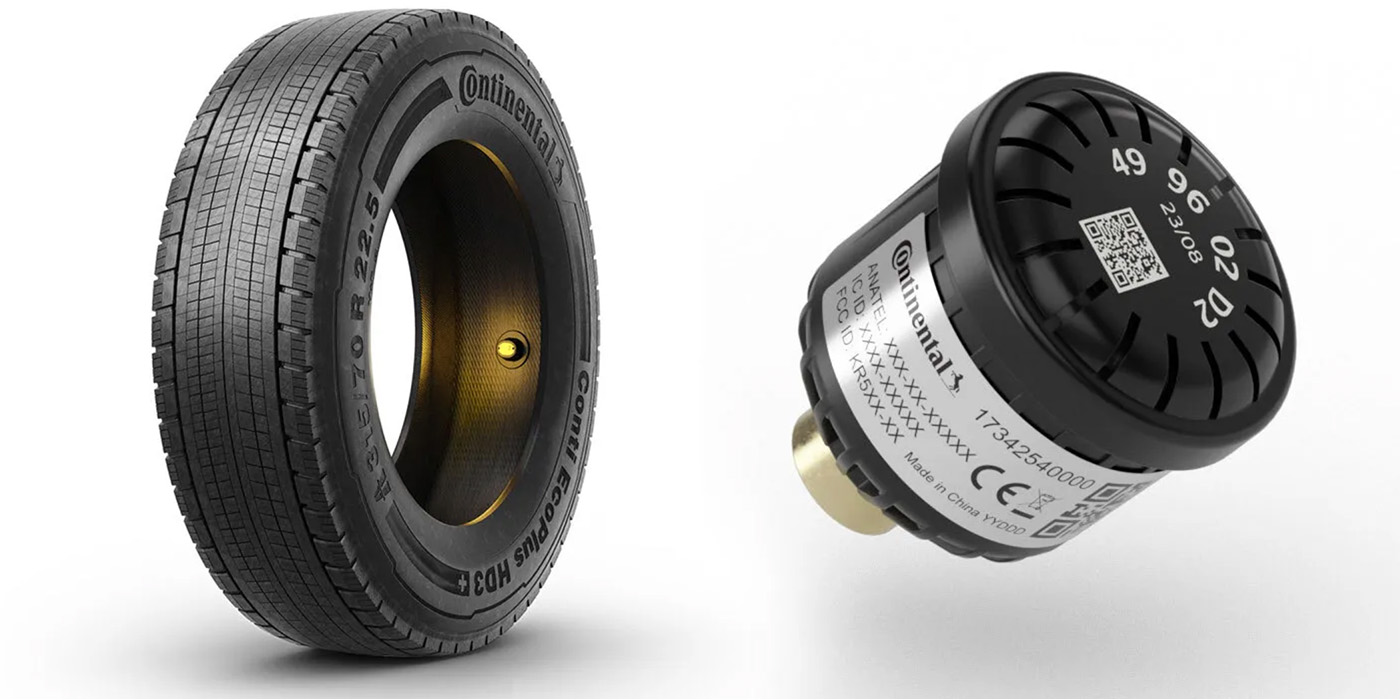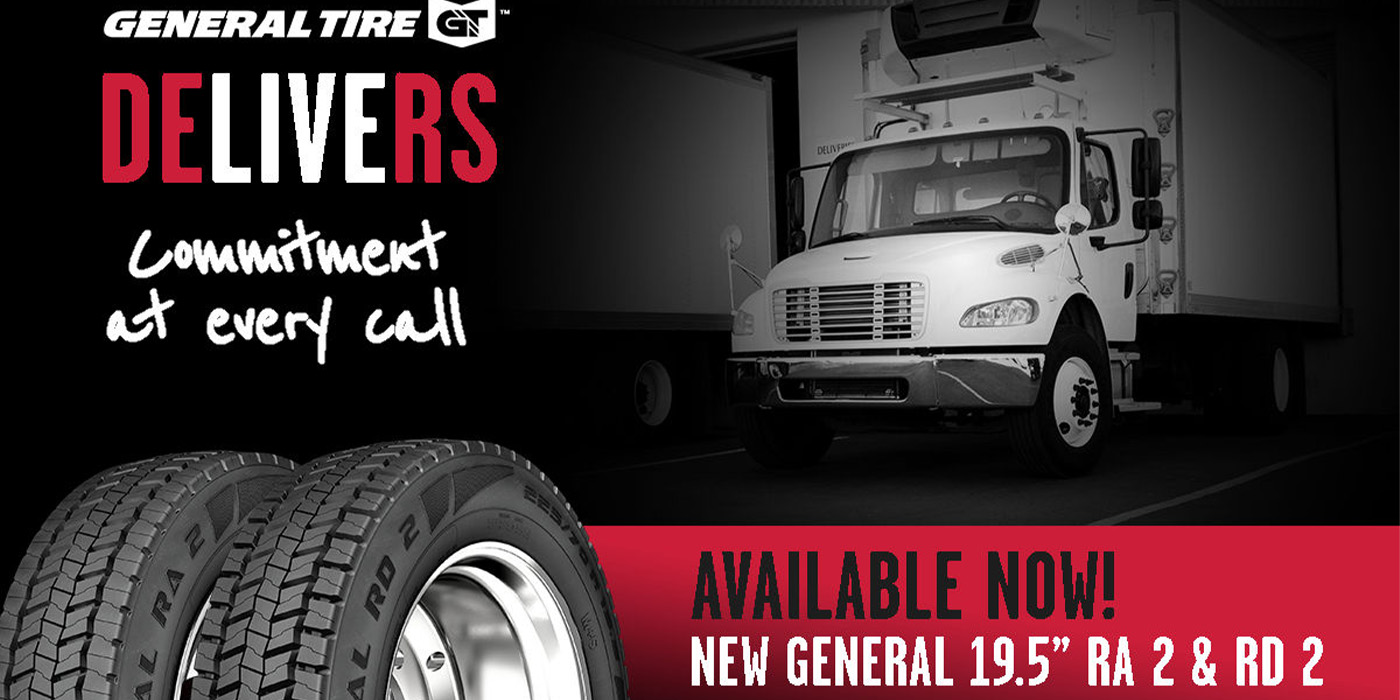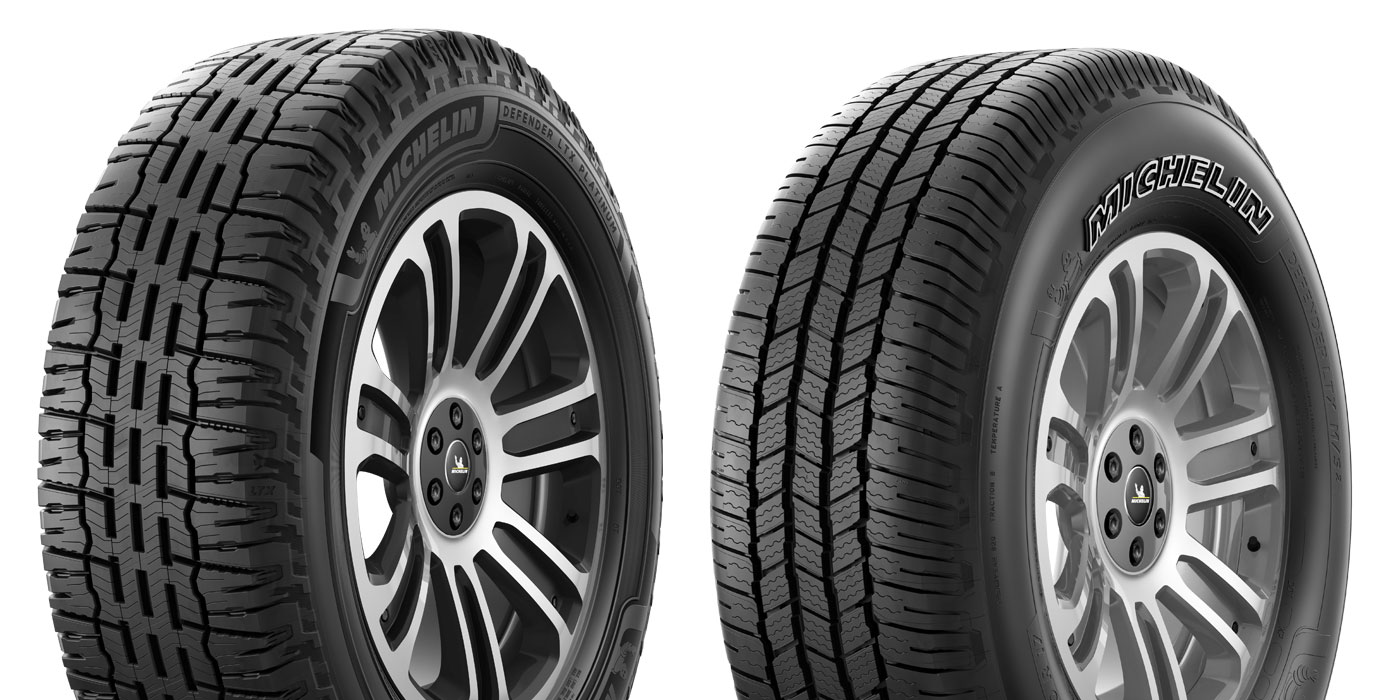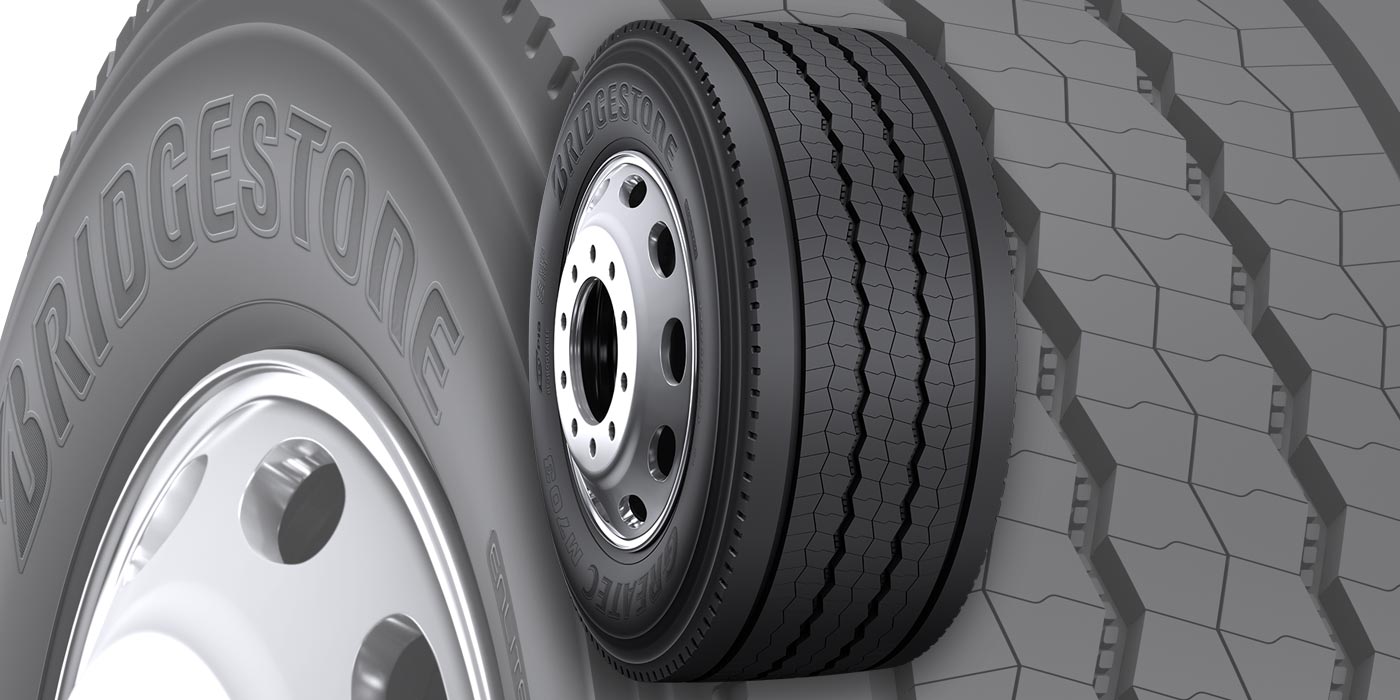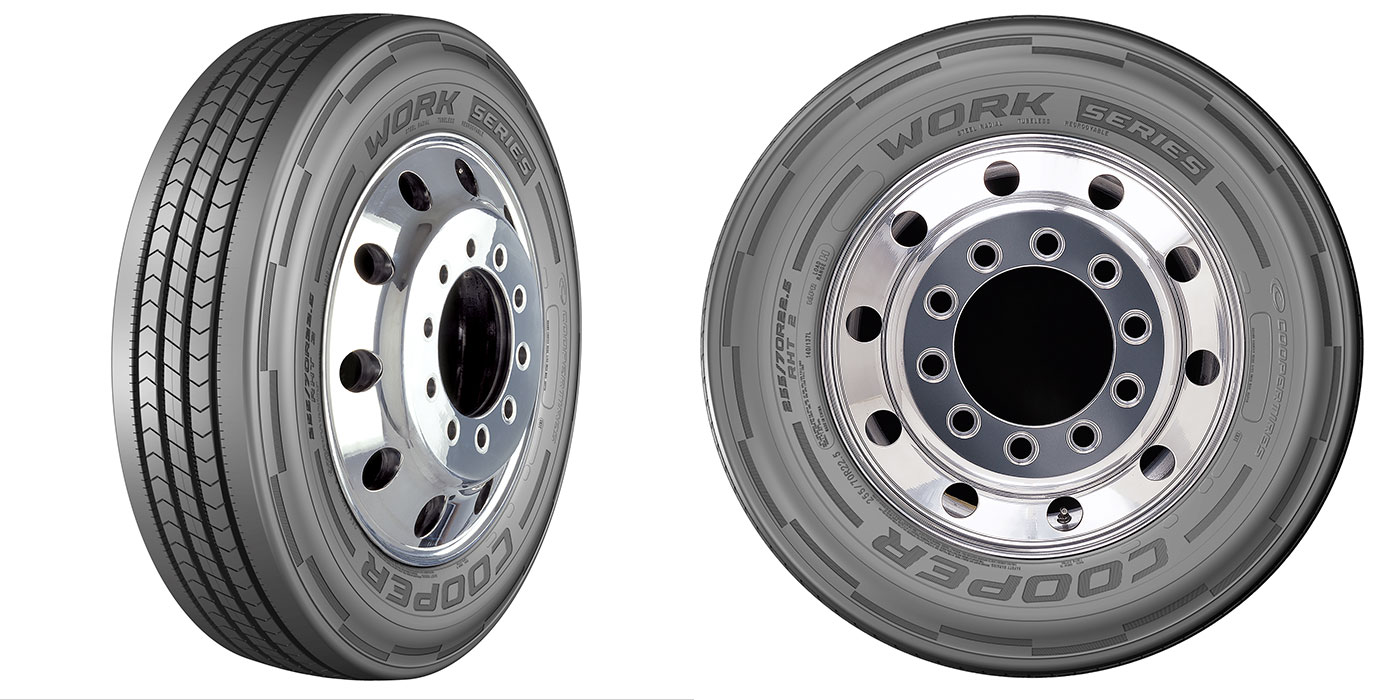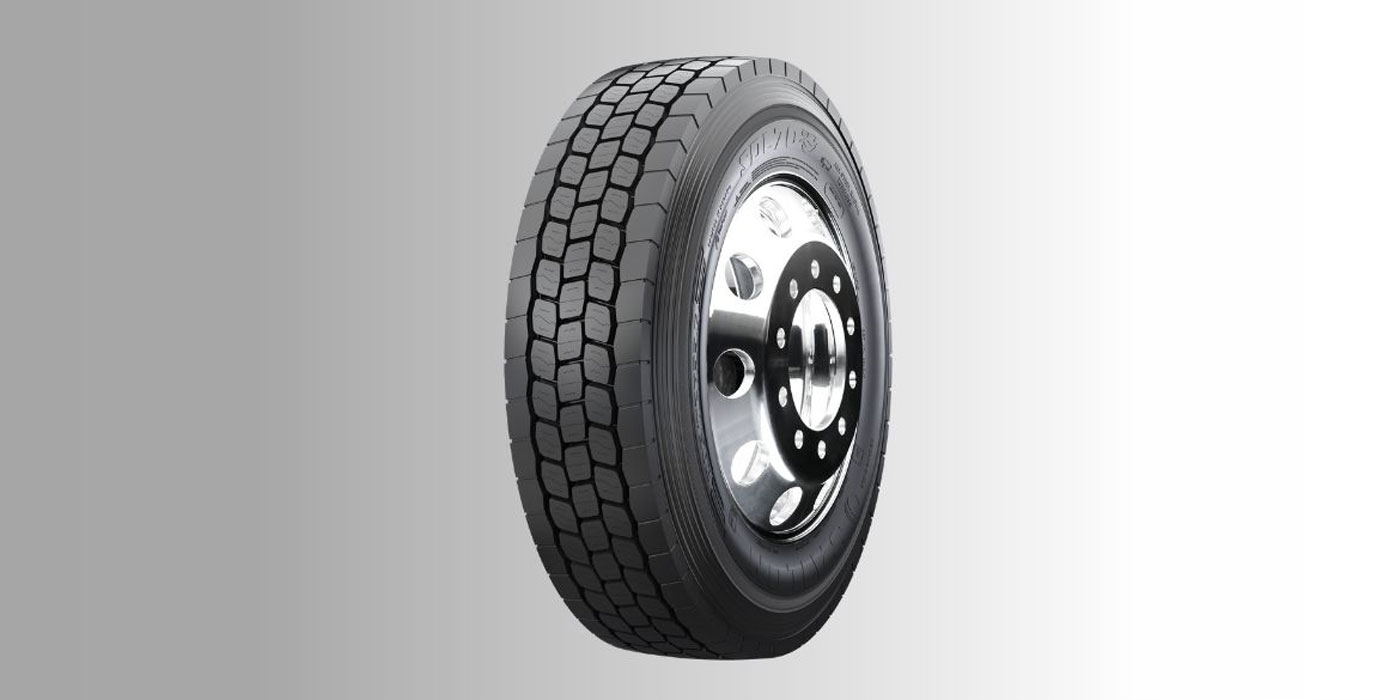The super wide base tire is a bit of an enigma. Some manufacturers will say it’s exactly the same type of tire as a wide base tire, while others will argue the size and application differ. You’ll also find a super wide base tire under many names: ultra-wide, super single, and most recently, new generation wide base single (NGWBS).
So what makes a super wide base tire a super wide base tire? We’ve gone to the experts to break this down and explain the benefits.
Super Wide Base vs. Wide Base
Generically speaking, a super wide base tire is often a single tire that can be used in the place of the traditional dual tire application for drive and trailer axles.
Bridgestone Americas would argue a super wide base tire is typically found in sizes 445/50R22.5 and 455/55R22.5, and that this type of tire technically has a lower aspect ratio than a wide base tire.
Michelin North America on the other hand would argue that wide base tires and super wide base tires are interchangeable terms.
“Wide base tires as the name implies, are tires that are wider [and have a wider contact patch] than standard tire sizes for an increased load carrying capacity,” explains Sharon Cowart, director of product marketing, Michelin Americas Truck Tires. “Wide base tires, historically and today, are designed for use in steer positions on vocational vehicles like cement mixers. Some typical sizes are 385/65R22.5, and 425/65R22.5.”
The 385/65R22.5 replaces traditional low profile truck dual tires in size 275/80R22.5 and 425/65R22.5 super wide tires replace 11R22.5 dual tires, Cowart notes.
“Early generations of wide base tires were designed for increased load capacity and flotation for steer axle applications. 445/65R22.5, 425/65R22.5 and 385/65R22.5 are typical wide base tire sizes,” adds Robert Palmer, director of market sales engineering, Bridgestone Americas Tire Operations.
Michelin’s Cowart would agree that super wide/wide base tires have come a long way in the past 30 or so years.
“There were some fleets that attempted to use these tires as single tires to replace dual tires in the drive position in tractor/trailer applications. However, there were many drawbacks since these tires were not specifically designed for this application,” Cowart says. “This is where the new generation wide base single tires, like the Michelin X One tire, came into play in the early 2000s…. NGWBS tires have really optimized contact patch stresses and are a dramatic improvement over traditional wide based tires in drive and trailer positions.”
Regardless of terminology, if your customer is looking for a tire to replace duals under the right application, super wide is the way to go.
Application
“The application of the super wide, ultra-wide or super single varies to a degree,” says Tim L. Phillips vice president of marketing and operations for CMA/Double Coin Tires. “CMA’s new super wide ultra-premium tires will be typically used in over-the-highway applications, where our ultra-premium wide base and other mix service tires are used in an on/off-road application.”
As far as positions go, super wide base tires are ideal for the drive and trailer positions in line haul and regional applications, as well as all-position for urban/regional and on-off road applications, Michelin’s Cowart adds.
“In long haul, regional operations and on/off road applications, tires face different challenges that affect the tire life and performance,” Cowart says. “Tires are application specific and designed to deliver different performance criteria in different applications and under different conditions. A fleet must understand their application, road conditions and operating environment.”
“That’s why it’s important that fleets understand the technology behind tires and how to choose the right tires for their application – tires that will provide the best overall value for the fleet and the bottom line.”
Weight is also a major factor.
“Wide base tires are ideal for applications where weight saving is premium,” Bridgestone’s Palmer says. “Aluminum wheels can deliver significant weight savings when used in all wheel positions. If a customer needs additional weight savings, installing a wide base tire in place of duals could be a good option.”
Cowart notes that the weight savings of using aluminum wheels and super wide base tires is significant. Fleets that carry heavy, bulk commodities will often use more wide base tires. Higher mileage fleets will also be more weight sensitive.
“A truck fleet can carry more than 700 pounds (aluminum wheel vs. aluminum wheel) or more than 1,300 pounds (steel wheel vs. aluminum wheel) per vehicle with the X One fitment in both the driver and trailer axles. This means more weight available for payload,” Cowart says.
Benefits of Making the Switch
Switching a customer over to super wide base tires can also come with additional benefits beyond weight.
“Fleets that have tested super wide base tires over a dual tire application have reported a benefit in improved vehicle performance, lower fuel consumption, and a maintenance savings. Servicing personnel love the fact there are fewer tires to check and the ease of checking air pressure on singles vs. dual tire application,” CMA’s Phillips says.
Compared to dual tires, using super wide base tires can often provide better wear if the tires are properly maintained. Irregular wear and poor tread life was once – and still can be – a major concern for super wide tires, with two large shoulders bearing weight rather than four when using duals; however, new designs have created a wider, flatter profile to better distribute stress on the footprint. This design especially helps reduce irregular wear in the trailer position, Michelin’s Cowart notes.
“Reports have indicated that wide base tires are performing well and, in certain applications, they are outlasting dual tire applications. As with any tire, the better the fleet is monitored the better the results will be. Maintaining proper inflation or checking the tire for unusual wear is very important,” Phillips adds.
Cowart notes that there are many factors at play when it comes to tread wear, and that in general, super wide tires and dual tires have comparable wear rates. Factors that hurt regular and balanced wear are poor maintenance, misalignment, over- or under-inflation, heavy or light loads, and even the type of pavement the tires encounter.
Fuel savings can also be another benefit, but with advanced technology, many duals have comparable fuel savings.
Assisting the Fleet
“It’s important to understand that every customer is different, as is each application,” Bridgestone’s Palmer says. “The first step when working with any customer is to take time to fully identify what their particular needs are. With any new product and/or application, we recommend fleets do a small trial. This will allow a dealer and customer to assess the advantages and disadvantages associated with a new product. Fleets should track the performance of the product, including fuel economy, wear life, removal reason, tire cost, tire serviceability, and installation.”
When deciding if super wide tires are best for a fleet, or really any tire, Cowart notes that they should evaluate their intended use and the following “success factors”: wear, fuel costs, mileage, traction, vehicle weight, payload weight, etc.
Knowing these factors and then testing the super wide tire that works best for the fleet is key to having the right tire.
“The best way to gauge the performance of a super single in a particular application is to test it. It is important to see what works best for each customer’s unique needs. A one-size-fits-all approach does not work well for tires,” Palmer says.





